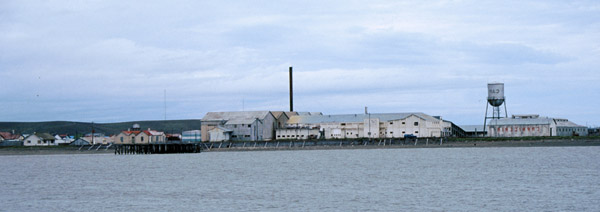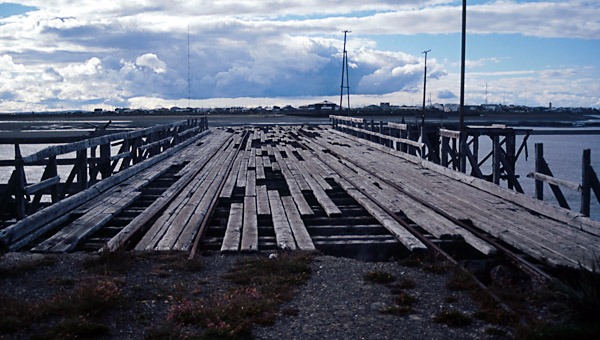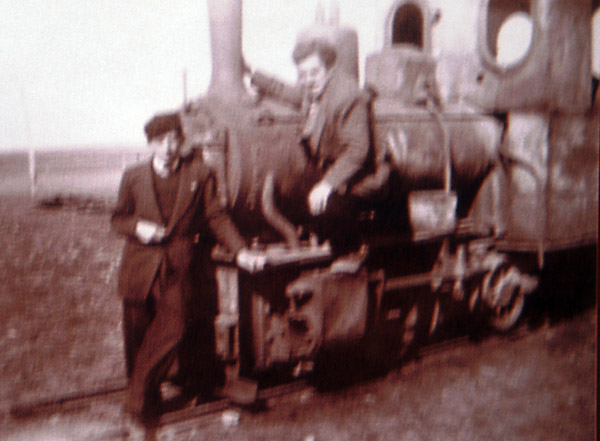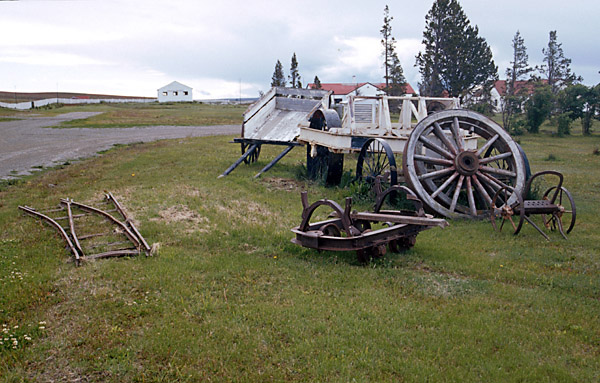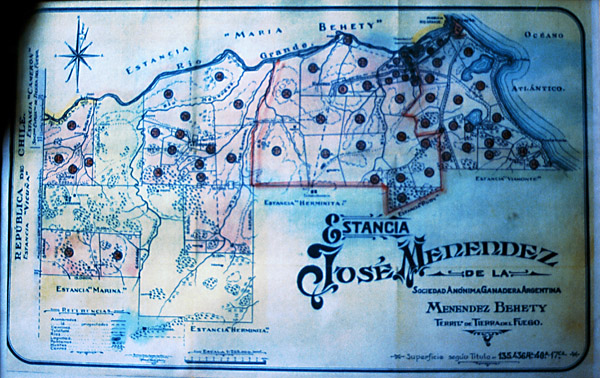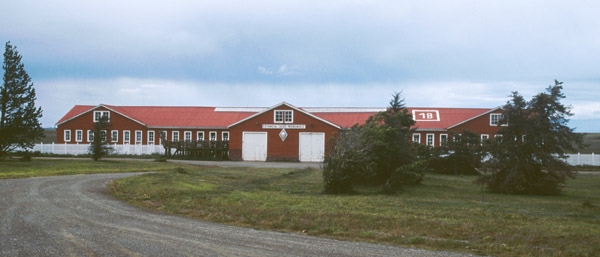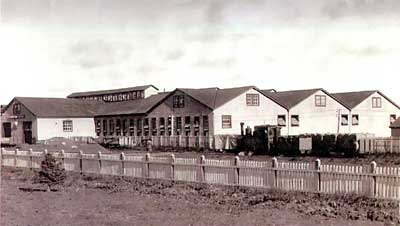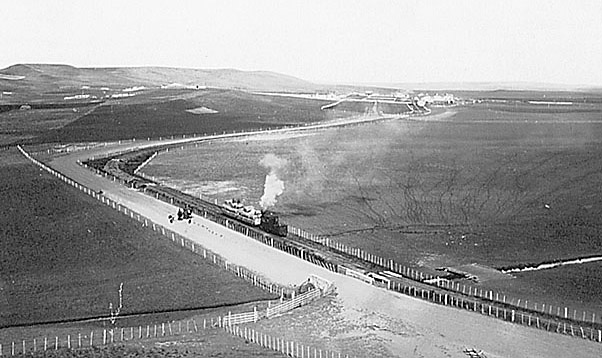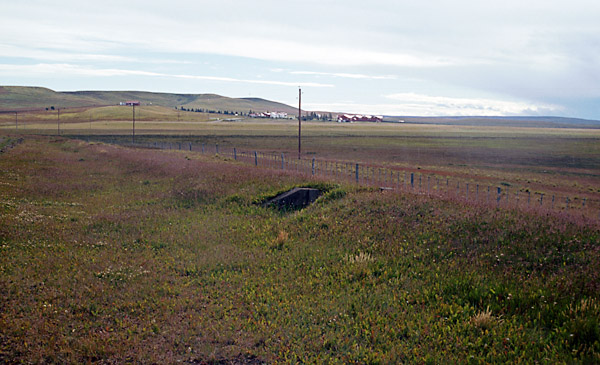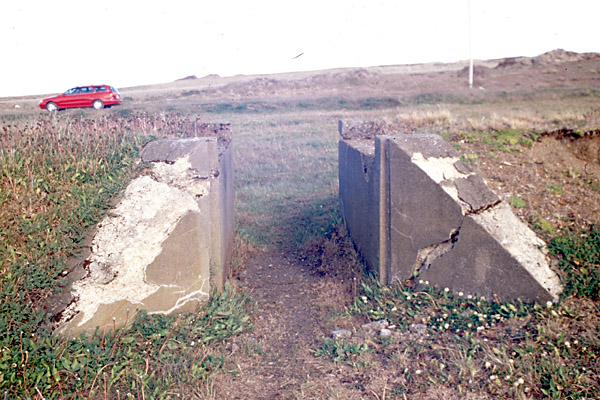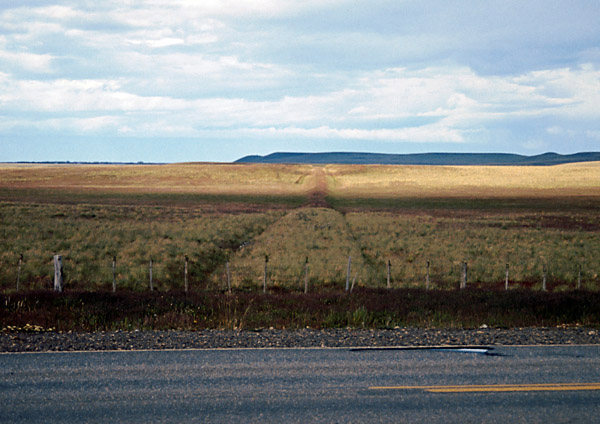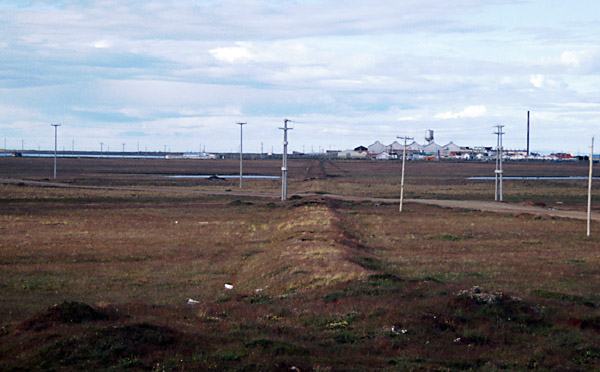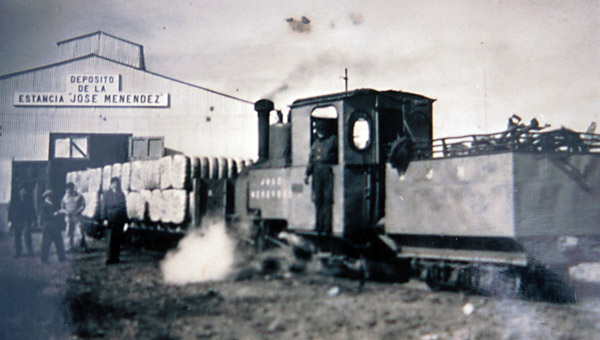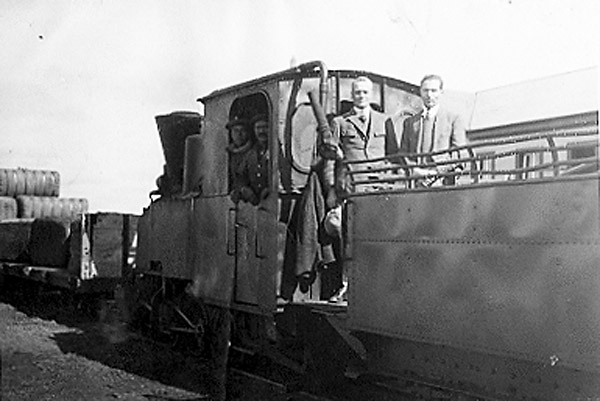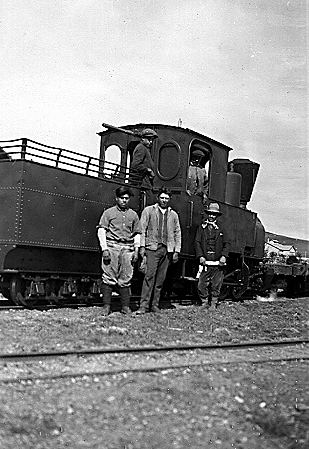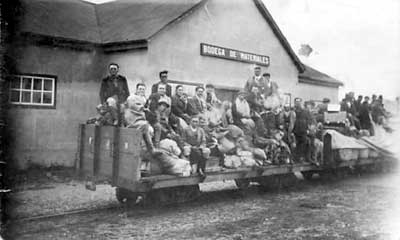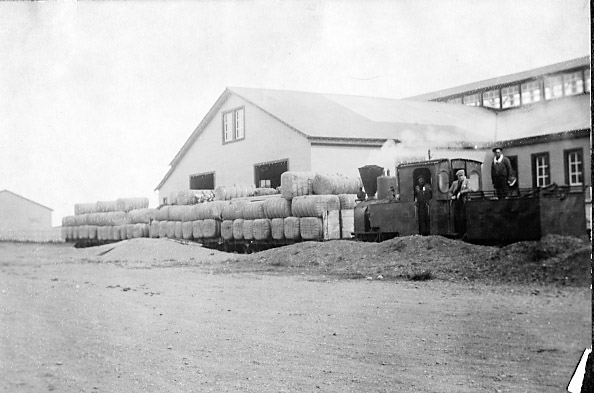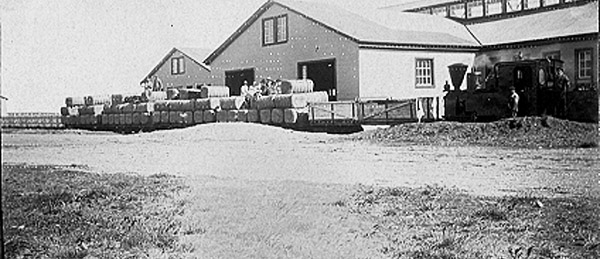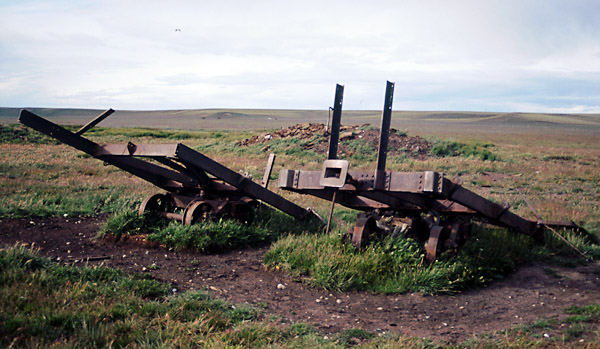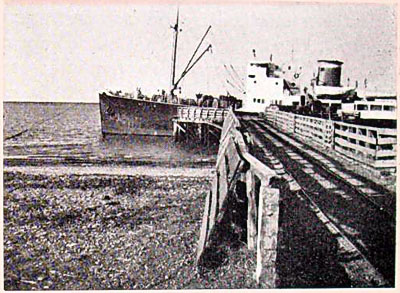 |
 |
|||||||||||||||
 |
||||||||||||||||
Two lines at Río Grande Background Two huge new estancias - Primera Argentina and Segunda Argentina - were laid out, south and north of the Rio Grande respectively, westward from the town of Rio Grande all the way to the Chilean border. On the death of the founder of the company these two estates were renamed after José Menendez and his wife Maria Behety. The new estancias, and older ones such as the historic Est. Viamonte to the south, obviously needed a slaughterhouse and freezer plant. A co-operative, 'the Compañia Frigorifica Argentina de Tierra del Fuego, embarked on the construction of a frigorifico on the south side of the Rio Grande near the sea, just opposite the town of the same name. The frigorifico, in 1940 sold to CAP (Corporación Argentina de Productores de Carnes) is now empty and derelict. The view below shows it as seen from the opposite side of the river. Its jetty or muelle is visible on the right.
Two railways The frigorifico railway The muelle survives (below), and is labelled as a monument. It can be seen that it has two railway tracks, clearly of 60cm. rather than one metre gauge. The river bank being steep, the muelle is relatively short.
The 60cm. system had at least one locomotive, a German 0-4-0T as seen in the photo below (2). Reg Carter's Argentinean industrial locos list says that this loco was a Koppel product from Berlin but does not give a builder's number (3). Martin Murray's preserved Koppel locos list suggests it may be no. 3741. This engine is reported to have been salvaged later, after the closure of the system, and to have been taken north to Republica de los Niños at Gonnet near La Plata (2).
Confusingly, a couple of relics of the 60cm. gauge lie amongst other antiques at Estancia José Menendez. It should be emphasised that the estancia never used 60cm. gauge itself.
Estancia José Menéndez The map below shows Estancia José Menendez (ex Primera Argentina). The Atlantic Ocean is to the right, with the Rio Grande forming the northern boundary and dividing it from Est. Maria Behety (ex Segunda Argentina). The straight line to the west is the Chilean border and to the the south the more irregular boundary is with older estancias such as Est. Viamonte towards the coast. The estancia's buildings are in the north east sector, just south of the river and roughly under one of the vertical folds in the map. From there the railway is a black line running north east towards the river mouth. In 1996 the Menendez group pulled out of Argentina and the estancia was divided up at that time (4). The new smaller estate has been marked with a red boundary on the map.
A well-engineered metre gauge line
The route
The line then ran off to the right parallel with the estancia access road, as shown in the photo below. This is the first of several kindly provided by Ann Munro through the good offices of Duncan Campbell's 'Patbrit' website. Two wagonloads of baled wool are seen being taken down to the muelle by a steam loco running tender first. Unusually there seems to be no barrier wagon between loco and load.
Below are three modern pictures of the line's earthworks. The first shows a culvert, probably one of the two visible in the photo above. The estancia buildings are in the background.
A closer view of a set of old abutments, as seen in 2000.
After crossing National Route 3 on the level, the track continued north east on a low embankment.
A short section of the line has been buried under landfill, but the final half-mile is again on a low embankment until it crosses the road to the frigorifico (in background) and ends at a transhipment platform parallel with the 60cm gauge along the waterfront. There are no signs that the metre gauge tracks ever ran onto the muelle itself. The resulting extra handling must have been awkward, and expensive in time and manpower.
Locomotive(s?) and stock It has been suggested that there were three locomotives in total at Rio Grande (1), but there is no indication as to whether it was the frigorifico or the estancia which had two. It seems unlikely that the estancia would have needed two engines regularly except during the shearing season, whilst the frigorifico would have been working all year round.
The above photo was probably taken at the frigorifico and port end of the line, outside what seems to be the estancia's own warehouse.
Two more photos (provided by Ann Munro) of what is probably the same engine, though now with a spark-arresting chimney. This implies the use of wood fuel, rather than oil as has been suggested.
The picture above (5) shows a pair of the line's 'plataforma' wagons for carrying bales of wool. It has been suggested that there were just a dozen of these. The second wagon appears to be carrying such bales whilst that nearer the camera has smaller sacks as well as its human cargo. Like the loco further up the page the wagons all seem to be clearly labelled - in this case with 'E J M' on the ends for 'Estancia José Menendez'.
The estancia's shearing gang pose for their picture atop wagons loaded with wool (above). The wagon to the right seems to have been a barrier wagon, perhaps to keep the locomotive away from the inflammable bales (though wool itself does not burn readily). In contrast, the picture below shows a loaded wool train in the same location outside the galpon de esquila but with no barrier wagon.
A similar photo, though with four loads of wool and an empty wagon next to the loco possibly as an anti-fire-risk barrier wagon.
One of the wagons survives today, albeit in two halves! The picture below was taken in January 2001 at the estancia rubbish dump. It shows a bogie flatcar with diamond (archbar) trucks and link and pin couplers. Whilst it has been cut in two, it would not be impossible to rejoin the halves if it were to merit display either in the estancia or in the town museum.
Closure and dispersal As suggested above, the trackbed is clearly visible even now. Apart from the derelict wagon other relics are limited to a number of steel sleepers and rails piled up by the shearing shed. The eventual end or destination of the locomotive is unknown.
Estancia Maria Behety An 8 or 10hp McLaren road loco hauls two trailers laden with wool bales outside one of the buildings at Estancia Segunda Argentina (6). The machine is superheated, as evidenced by the strange shape of the smokebox, and seems to have covers over the motion, perhaps to keep out the dust. Regretably the building was later destroyed by fire. The fate of the road loco is not known, however, a Ruston Procter wool bale trailer similar to that shown here survives at Est. María Behety to this day.
Rio Grande public muelle
This photo apparently shows a public muelle at Rio Grande, probably around 1940 (7). It bears a single narrow gauge track.
References:
29-10-11
|
||||||||||||||||
Main pages
Chapter 8
The big estancias and 'frigoríficos'


